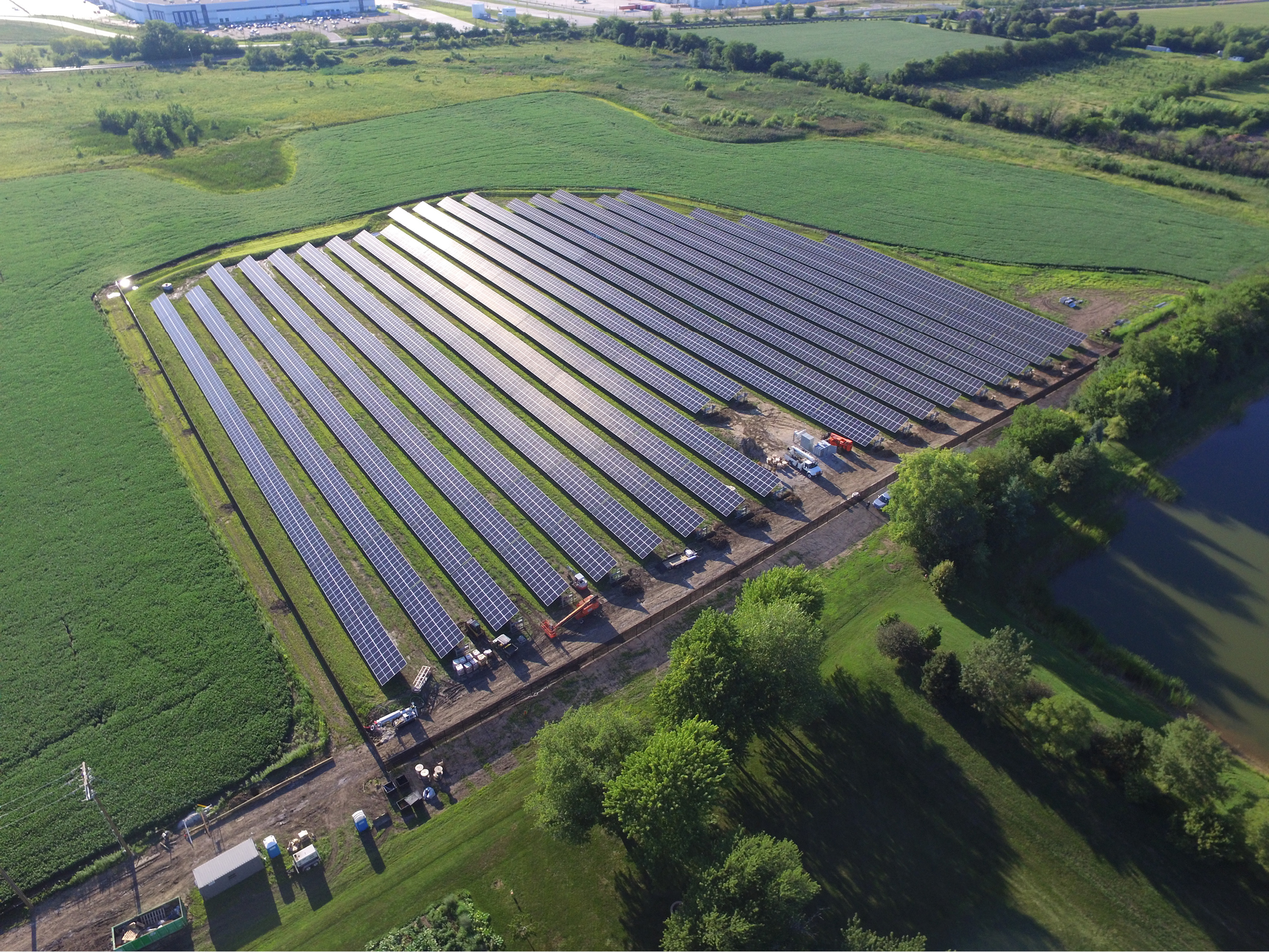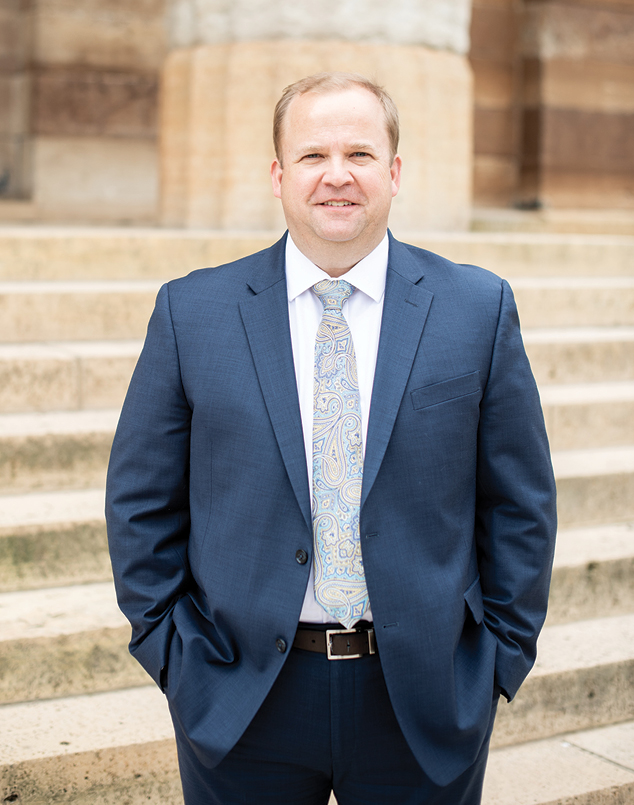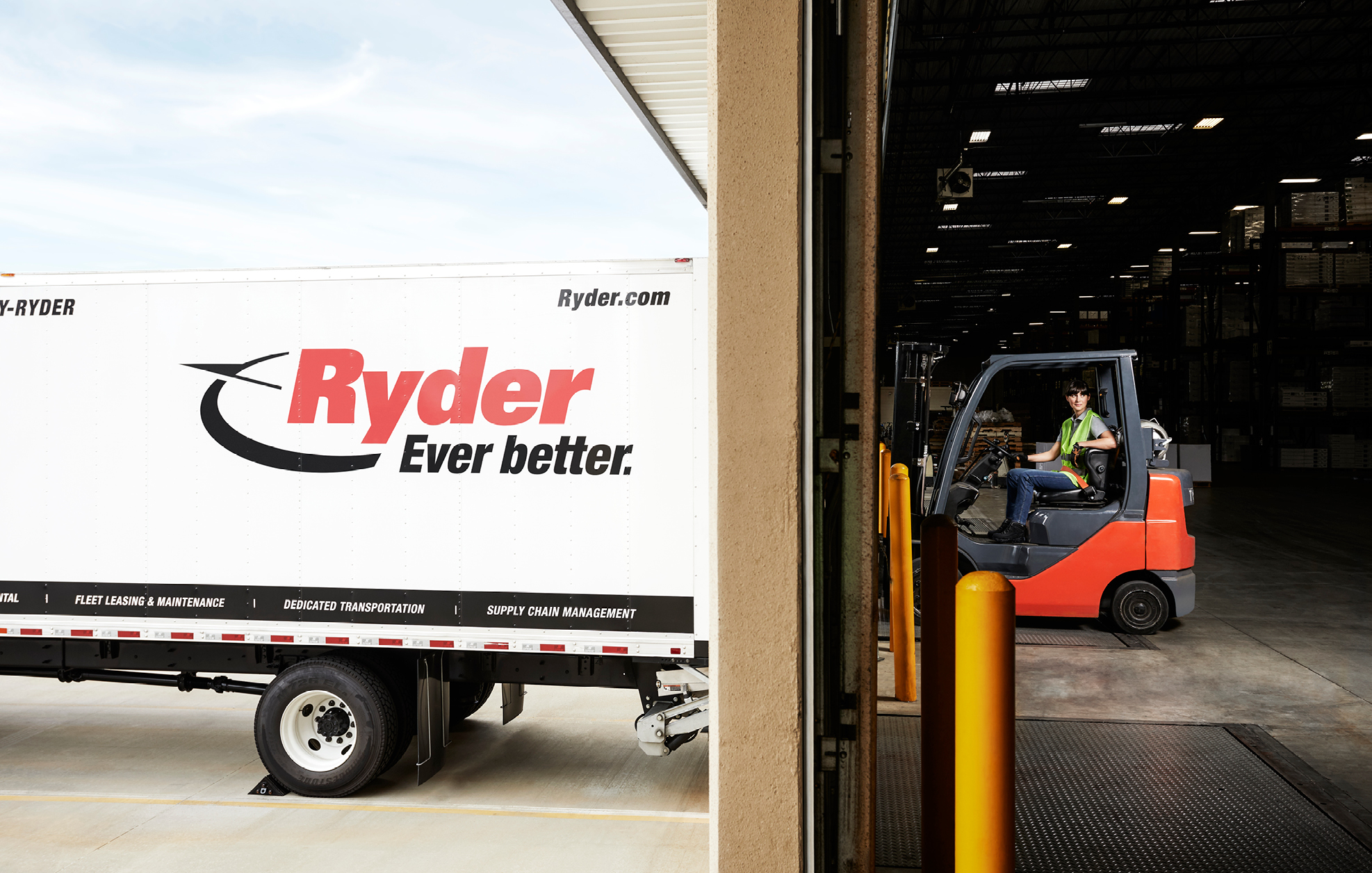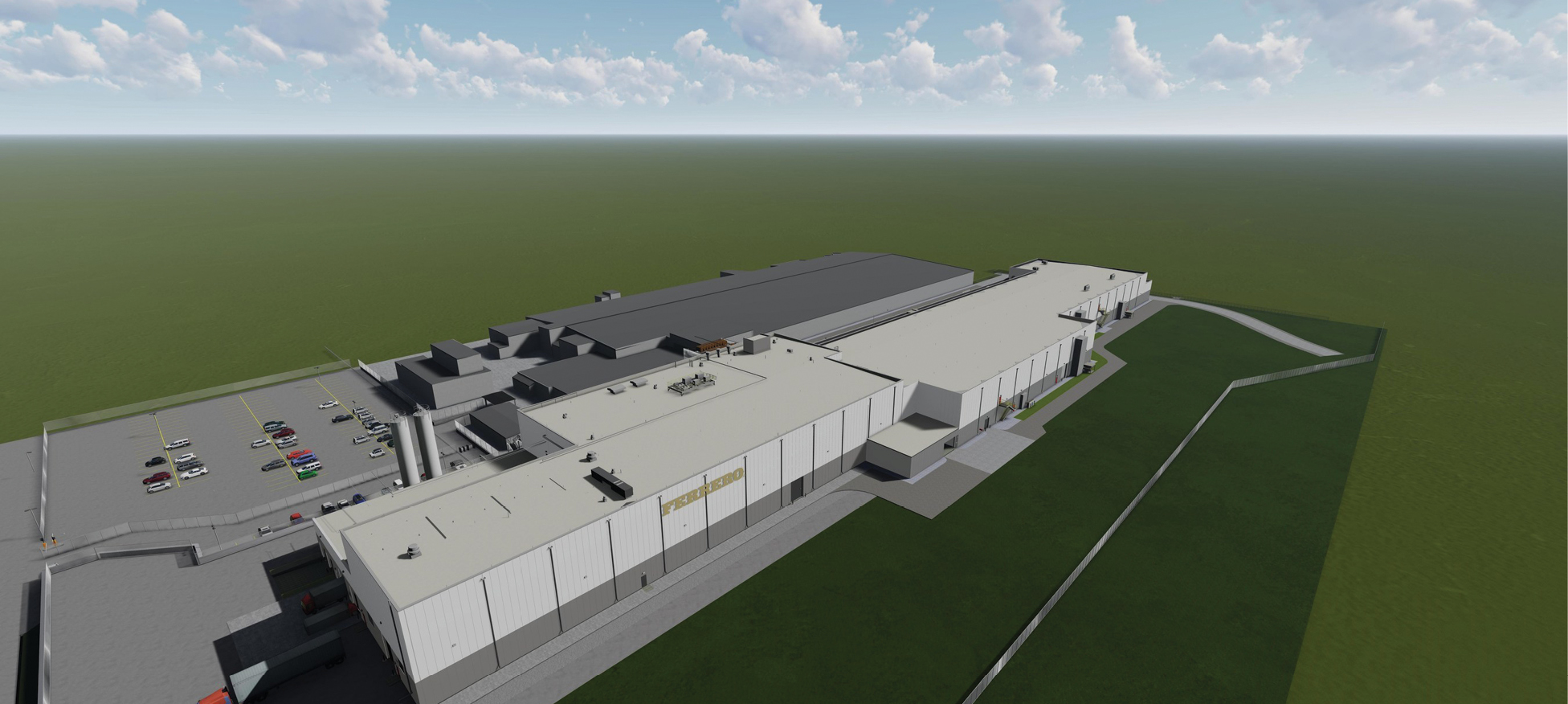Power bills sent out around the state of Illinois are going to look a bit different in the coming decade, as the state aggressively pursues greener power alternatives. Solar energy is a main focus for that transition, especially throughout the northern portion of the state. This year, Illinois will not only harvest more solar energy than before, but adopt transitions that show promising benefits for the future of the Illinois economy.
Chicago-based Commonwealth Edison (ComEd) is an Exelon Corporation electric utility provider that provides electricity to over 4 million northern Illinois customers, or 70% of the state population. In 2022, the company received 19,292 applications from Illinois residents, businesses and industrial users to connect solar panels to its grid, a 74% increase from 2021.
Collecting Brighter Days
Illinois’ largest commercial solar developer and operator Summit Ridge Energy (SRE) and ComEd announced the opening of the Speedway Solar project in February 2023. Located an hour southwest of Chicago in Elwood, Illinois, the 31-acre site contains over 2,300 solar panels.
Speedway Solar represents ComEd’s 75th community solar development in its service territory, which covers the northern part of the state bordering Wisconsin, Iowa and Indiana. Power produced at the 2.5-megawatt (MW) site will provide 350 customers access a solar energy alternative. By the end of this year, ComEd anticipates doubling the community solar projects interconnected to its electric grid, which will service 36,000 customers.
Soon Speedway Solar will be followed by the opening of the $425 million-plus Double Black Diamond Solar Project. In late 2022, the project broke ground in Sangamon County and will be operated by Boston-based Swift Current Energy. Marking the state’s largest solar project, 15 new permanent jobs will be created to maintain the 4,100-acre plant.
Power harvested from the solar plant will have the capacity to power more than 85,000 Illinois homes, generate long-term tax revenue in Sangamon and Morgan counties and provide a positive environmental impact.
“It’s an opportunity for us to show that we have the workers here locally that are qualified to do clean energy and state-of-the-art projects,” says Ryan McCrady, president and CEO of the Springfield Sangamon Growth Alliance. “Having this additional utility supply continues to diversify our portfolio of electricity, which is very important in the future to help support current businesses and attract new ones.”
Options matter. Increasing green energy access and availability not only benefit Illinois residents but position the state to lead the U.S. in embracing clean energy efforts.

The Speedway Solar project in Elwood, Illinois
Photo courtesy of ComEd
“ESG goals are becoming an important focus for all companies, especially publicly traded companies,” McCrady says. “This allows them to access that and meet their goals and support sustainable development.”
Chicago Runs Clean
Chicago Mayor Lori E. Lightfoot announced in August 2022 an agreement to purchase renewable energy from Swift Current Energy and retail electricity supplier Constellation for city facilities and operations by 2025. The move makes Chicago one of the largest cities in the U.S. to make the switch to clean energy. Once in place, Chicago will cut its carbon footprint by 290,000 metric tons per year.
 “ESG goals are becoming an important focus for all companies, especially publicly traded companies. This allows them to access that and meet their goals and support sustainable development.”
“ESG goals are becoming an important focus for all companies, especially publicly traded companies. This allows them to access that and meet their goals and support sustainable development.”
— Springfield Sangamon Growth Alliance President and CEO Ryan McCrady on clean energy becoming widely available for market purchase
“The signing of this agreement demonstrates that the City of Chicago is leading by example and driving high-impact climate action, building the clean energy workforce of the future and equitably distributing meaningful benefits to foster the local clean energy economy for all,” said Mayor Lightfoot.
The agreement states that Chicago will use energy generated by the 593-MW Double Black Solar Project for high-energy facilities such as the city’s airports, Harold Washington Library Center and the Jardine Water Purification Plant.
Profitable Transitions
ComEd commissioned BW Research to produce the state’s first study focused on clean energy transition. The research firm analyzed the economic and workforce development challenges and opportunities Illinois communities will face in this transition, yielding promising data.
Two scenarios were introduced in the job study.
The Reference scenario examines the impact of decarbonization-focused state laws like the Climate and Equitable Jobs Act and federal laws like Inflation Reduction Act. The Moderate Electrification scenario goes a step further to include additional, aggressive decarbonization actions, meeting Illinois’ net-zero emissions by 2050 goal, with high levels of electrification while maintaining a significant role for hydrogen and gas backup for heating.
The study found that in either scenario, Illinois was set to gain thousands of jobs from transitioning to clean energy by 2050.
The Reference scenario showed mid- to high-paying jobs set to increase by 7% or 38,000 jobs, a majority predicted in solar, wind, residential HVAC and charging and hydrogen fuel stations sectors.
The Moderate Electrification scenario anticipates 17% growth or 151,000 jobs with the largest increases among bioenergy, solar, hydrogen fuels, and the commercial and residential HVAC sectors.
The study suggests that the employment churn that will occur as a result of transition will require active support to the state’s workforce.
SRE is a company looking to kickstart building employee skills to prepare for future development of jobs in clean energy. Partnering with sustainable development company 548 Enterprise and clean energy career school Ecademy, SRE is investing $600,000 on Chicago’s West Side to train more than 10,000 residents over 10 years.
Currently, the three organizations are campaigning to raise $20 million for a “Sustainability Hub” to support curriculum and program development, resources and credentialing services. They are offering a 13-week training program and on-the-job training at various solar projects around the state.
“We are thrilled to expand our international footprint by bringing clean energy training to historically underserved communities right here in Chicago,” said Rob Wallace, president and CEO of Ecademy and co-founder of Power52, at the announcement. “We look forward to partnering with SRE and 548, to provide clean energy training to prepare our graduates for a green career. Not only will the trainees come from these underserved communities, the graduates will be designing, constructing, and maintaining the solar solutions that will provide clean, renewable, and stable power to their communities. For the community by the community!”
Illinois on the Move

Ryder adds to its growing distribution hub in greater Chicago.
Photo courtesy of Ryder Integrated Logistics
Logistics companies are finding Illinois is the location to not only tap into a majority of the U.S. market but grow at a rapid pace.
Ryder Integrated Logistics is investing $3.3 million to add its 10th multiclient distribution center in the greater Chicago area. The new 550,000-sq.-ft. facility will be located in North Aurora and add 100 new jobs. “The multiclient warehouse expands our footprint in a key distribution hub, which is a one- to two-day drive from about half of the U.S. population. Chicagoland also has a dense labor force, and with other Ryder warehouse operations nearby, we can offer the flexibility customers often need to manage seasonal and market changes,” says Darin Cooprider, senior vice president of consumer-packaged goods for Ryder. The company services nine of the top 10 U.S. food and beverage companies. The location adds to its recently acquired Midwest Warehouse & Distribution System footprint.
Another logistics giant, RJW Logistics Group, added to its growing roster of greater Chicago warehouses in 2022. The company is investing $4.9 million in a new 667,000-sq.-ft. facility in Romeoville, located 44 minutes outside of Chicago. “By growing our centralized warehousing footprint, we’re positioned to meet increased demand and deliver industry-leading performance in today’s tight, unpredictable market,” said RJW Group CEO Kevin Williamson. “Our approach allows us to deliver to over 100 national retailers with over 98% on-time, 99% in-full performance and nearly 100% inventory accuracy.”
Annually, the new facility will ship more than 65 million cases and receive 60,000 pallets. This will help the company have more consistency in product flow to the Midwest market, creating 400 new jobs.
Bloomington Keeps It Sweet

A rendering of Ferrero’s Kinder Bueno facility, which the company broke ground for in November 2022
Image courtesy of Ferrero North America
Two years after the opening of Ferrero’s first factory in the U.S. in Bloomington, Illinois, the confectionery company is ready for a $214.4 million, 169,000-sq.-ft. expansion. The investment supports a new facility dedicated to manufacturing Kinder Bueno products in North America — another first for the state of Illinois. Completion is anticipated in 2024, adding 200 new jobs to the company’s existing site, located an hour north of state capital Springfield.
“This investment will fuel our momentum in North America, a strategic growth area for Ferrero. Enhancing our manufacturing capabilities in the market is key to driving our innovation agenda and advancing Ferrero’s goal of becoming a world leader in snacks and confectionery,” said Alanna Cotton, president and chief business officer of Ferrero North America. “We’re grateful for the strong partnerships we have with state and local leaders here, and proud that our expansion is part of Bloomington’s amazing success story.”
Bring On the Megasites

Illinois aims to build its portfolio of ready-made sites like Global Trade Park South in Rockford.
Photo courtesy of Intersect Illinois
In February 2023, Illinois Governor JB Pritzker announced $40 million for the state’s Rebuild Illinois Capital Funds to boost the development of megasites to attract large-scale industrial investments.
The grant opportunity is open until April 2023 to private businesses, local governments and non-profits to redevelop existing sites or prepare ready-made sites. The announcement stated that grant sizes will range from $250,000 to $5 million based on acreage at the site, 200 acres being the minimum amount for consideration. Applicants must own or have an agreement to own the eligible property to receive funding, receiving up to $5,000 per acre. Funding can be used to improve infrastructure on or leading to the site, utility upgrades, remediation and cleanup of the site and more. With the rise of a clean energy focus in the state, having megasites readily available to move into is vital to attracting large-scale projects, like the Black Diamond Solar Project.
“Major job creators are consistently looking for investment-ready sites they can get up-and-running in a short amount of time — and Illinois is home to some of the largest such sites in the country, all ripe for fresh development,” said Gov. Pritzker. “The new Megasites Investment Program grants will help communities innovate their own business attraction efforts and will spur economic development in communities across our great state.”

